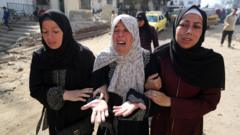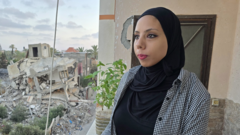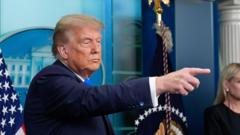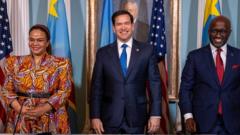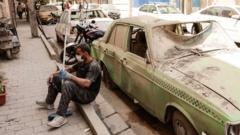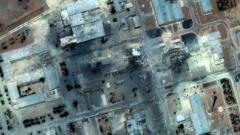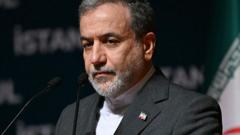Amidst devastation and uncertainty, Iran stands at a crossroads for potential change and internal challenges following the cease-fire.
Iran's Outlook Post Cease-Fire: A Nation at a Critical Juncture

Iran's Outlook Post Cease-Fire: A Nation at a Critical Juncture
The lingering effects of the Israel-Iran conflict leave the Islamic Republic facing critical decisions.
In the aftermath of the recent 12-day conflict between Israel and Iran, which briefly involved U.S. forces, the Islamic Republic finds itself at a pivotal moment. Reports from Tehran on June 29, 2025, captured the tense atmosphere as many citizens reflect on their nation's future. The conflict, marked by intensified Israeli airstrikes, including targeted attacks on Evin prison—the infamous site of political repression—has reignited deep-seated longings for change among the Iranian populace.
One such voice from the Iranian diaspora is Roxana Saberi, a dual Iranian-American citizen and author, who has been deeply affected by the realities of life under the current regime. As she witnessed reports of destruction, her memories of personal oppression during her incarceration unfurled vivid images of fear and uncertainty. “In that moment, I felt the duality of yearning for liberation versus the distress of seeing loved ones at risk,” she shared. Saberi's experience embodies the struggle faced by many in the nation, where aspirations for freedom clash with the painful realities of war and repression.
President Masoud Pezeshkian, a moderate leader, characterized this moment as a "golden opportunity for change," yet the landscape is rife with existential risks for the government. The conflict has weakened the already frail economy and challenged the authority of the clerical leadership—highlighted by the absence of a decisive blow against the aging Supreme Leader, Ayatollah Ali Khamenei.
Prime Minister Benjamin Netanyahu's remarks about the potential for the ayatollah's death to resolve the conflict underscores the high stakes involved. The Islamic Republic, while battered, continues to grapple with its identity and role on the international stage, balancing national pride fueled by uranium enrichment against the growing discontent within its borders.
As the dust settles from the recent turmoil, the future of Iran remains uncertain, with citizens left to contemplate whether this moment will mark the dawn of significant transformation or a return to the status quo.



